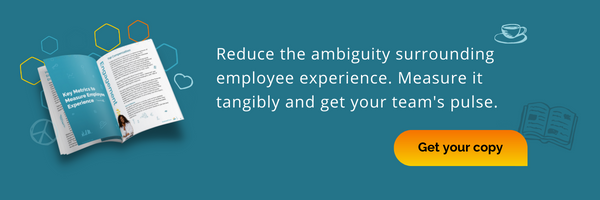An efficient team runs on contributions from all members and transparent communication. Collecting feedback from your team ensures that everyone is consistently aware of expectations, feels included in decision-making, and can effectively resolve conflicts. At the halfway point of the 12 Days of Employee Experience, we’re discussing feedback’s impact on the employee experience. To spread team cheer as well as Buddy the Elf does, read on!
Importance of Consistent Feedback
Assuming you know where everyone in your organization stands is a misguided approach to management. Feedback is essential, whether it’s performance, team objectives, or a general pulse on progress. Gathering employee feedback provides direct insight into their experiences and points of view. Zippia’s research found that “65% of employees want more feedback.” Teams can’t make improvements without constructive discussions prompted by feedback. Feedback should be a loop—gathering and giving feedback should flow circularly and consistently.
Provide and collect feedback consistently to ensure efficient and compelling discussions. Feelings of surprise and confusion often arise after an annual performance review. To avoid blindsiding and poor morale, conversations around performance expectations and areas of improvement should occur multiple times throughout the year.
Collecting feedback creates a culture grounded in transparency. It demonstrates that the organization values peoples’ opinions and recommendations. Employees often have first-hand insight into the customer experience and the work environment. So, their feedback provides a valuable perspective to the organization. Many types of feedback benefit from being anonymous, ensuring that feedback is accurate and honest and that no one fears repercussions from their statements.
How to collect feedback
It's essential to define how you'll collect feedback, why you're gathering it, and how you'll use it to impact your organization. And it's equally important to articulate why you're soliciting feedback in whatever format you use. Surveys, conversations, suggestion boxes, and tools like Viva Pulse are a few ways to collect feedback.

Most people are familiar with traditional feedback collection methods. Viva Pulse is the newest addition to Microsoft Viva. The app provides pre-made and customizable feedback templates on various topics to send out to your team. Within Viva Pulse, AI will analyze responses, summarize recurring themes, and provide recommendations for team improvement.
Converting Insights into Action
Once collected, organizations should review feedback responses and consider the suggestions brought forward. Find ways to turn feedback into action! When your team grants you insight and tips for improving current operations, cherish it. When you collect feedback and no changes occur, the process becomes frustrating, and people are unlikely to contribute their opinions again. Oak Engage reports that “companies who conduct regular feedback experience 14.9% lower turnover rates.” Using employee feedback for action enables change company-wide, as the entire organization feels the impact of feedback collection.
Feedback is a window into the employee experience at your organization. Using efficient collection methods, collecting feedback consistently, and using responses to improve operations are essential to a positive work experience. Want to learn more about understanding and measuring your employee experience? Check out our free ebook!
